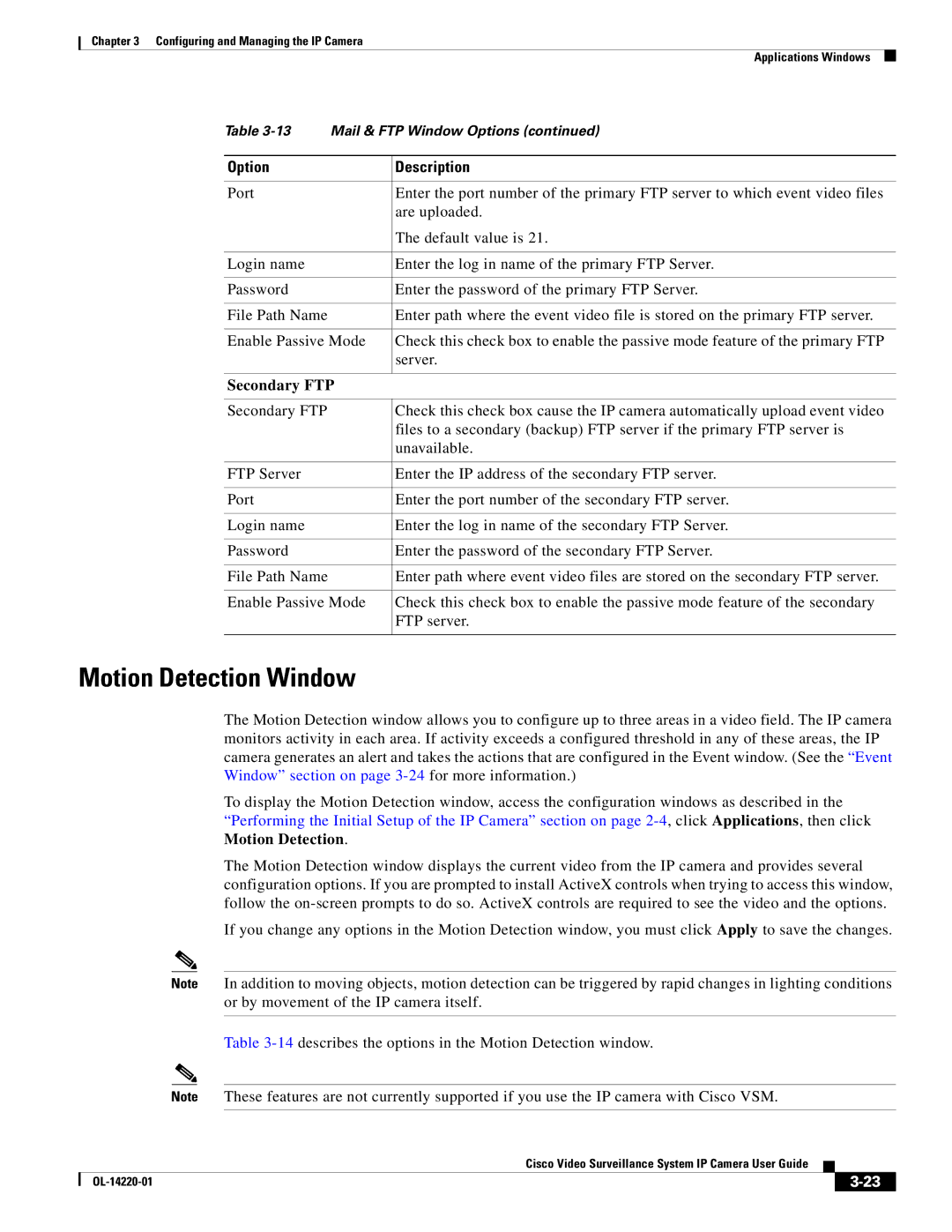
Chapter 3 Configuring and Managing the IP Camera
Applications Windows
Table | Mail & FTP Window Options (continued) | |
|
|
|
Option |
| Description |
|
|
|
Port |
| Enter the port number of the primary FTP server to which event video files |
|
| are uploaded. |
|
| The default value is 21. |
|
|
|
Login name |
| Enter the log in name of the primary FTP Server. |
|
|
|
Password |
| Enter the password of the primary FTP Server. |
|
|
|
File Path Name |
| Enter path where the event video file is stored on the primary FTP server. |
|
| |
Enable Passive Mode | Check this check box to enable the passive mode feature of the primary FTP | |
|
| server. |
|
| |
Secondary FTP |
| |
|
|
|
Secondary FTP |
| Check this check box cause the IP camera automatically upload event video |
|
| files to a secondary (backup) FTP server if the primary FTP server is |
|
| unavailable. |
|
|
|
FTP Server |
| Enter the IP address of the secondary FTP server. |
|
|
|
Port |
| Enter the port number of the secondary FTP server. |
|
|
|
Login name |
| Enter the log in name of the secondary FTP Server. |
|
|
|
Password |
| Enter the password of the secondary FTP Server. |
|
|
|
File Path Name |
| Enter path where event video files are stored on the secondary FTP server. |
|
| |
Enable Passive Mode | Check this check box to enable the passive mode feature of the secondary | |
|
| FTP server. |
|
|
|
Motion Detection Window
The Motion Detection window allows you to configure up to three areas in a video field. The IP camera monitors activity in each area. If activity exceeds a configured threshold in any of these areas, the IP camera generates an alert and takes the actions that are configured in the Event window. (See the “Event Window” section on page
To display the Motion Detection window, access the configuration windows as described in the “Performing the Initial Setup of the IP Camera” section on page
The Motion Detection window displays the current video from the IP camera and provides several configuration options. If you are prompted to install ActiveX controls when trying to access this window, follow the
If you change any options in the Motion Detection window, you must click Apply to save the changes.
Note In addition to moving objects, motion detection can be triggered by rapid changes in lighting conditions or by movement of the IP camera itself.
Table
Note These features are not currently supported if you use the IP camera with Cisco VSM.
|
| Cisco Video Surveillance System IP Camera User Guide |
|
| |
|
|
| |||
|
|
|
| ||
|
|
|
| ||
